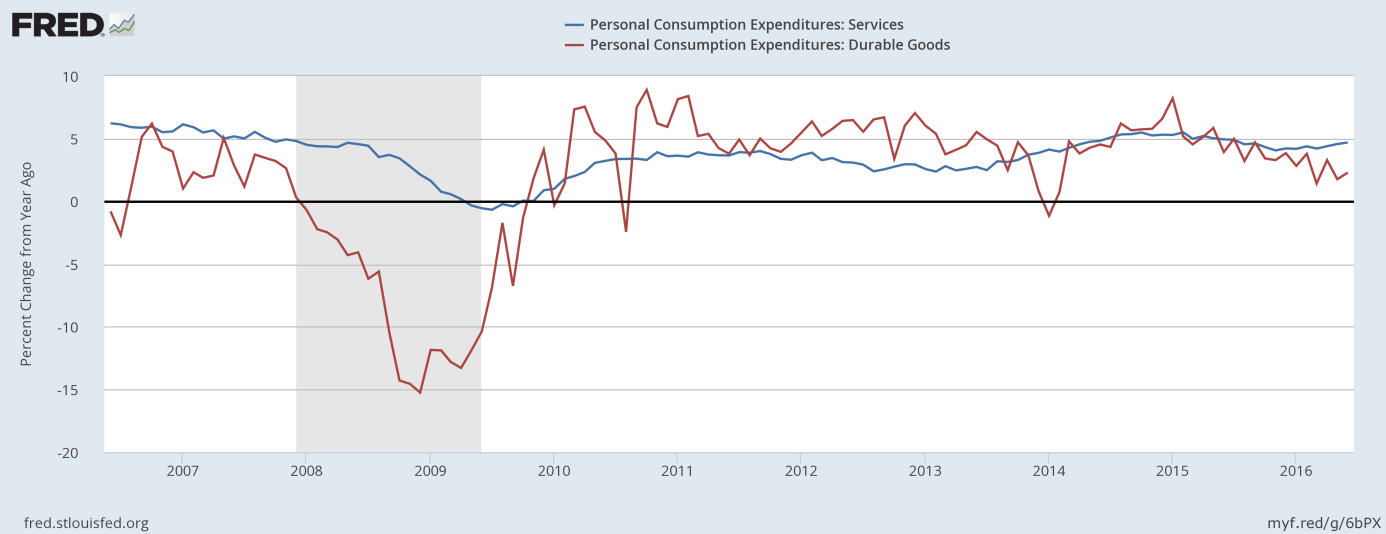U.S. Markit Services PMI remained unchanged at 51.4 in July. What does it mean for the gold market?
The U.S. services sector expanded last month at the same sluggish pace as in June. The index was above the stagnation level of 50, but growth remained muted. According to Chris Williamson, Chief Economist at Markit:
“Those looking for signs of the US economy moving up a gear in the third quarter will be disappointed by the PMI readings for July. The surveys are indicating that the pace of economic growth has held at around 1% at the start of the third quarter, largely unchanged on the signals sent by PMI s for the first and second quarters.”
This is good news for the gold market, as the Fed and many investors expect a rebound in the third quarter. Their disappointment may thus prevent the U.S. central bank from hiking interest rates in the near future and spur some safe-haven demand for gold among investors.
But the price of gold declined yesterday. Why? Well, the reason may be simple profit-taking after the preceding rally. Another explanation is that the report showed that the rate of job creation picked up to its fastest since January. Also the ADP employment report showed strong job creation. This positive news on hiring could strengthen expectations of strong Friday’s nonfarm payrolls and be a drag on gold. Moreover, the Non-Manufacturing ISM registered 55.5 percent in July. It was slightly less than in June, but the index remained high and represented continued growth in the non-manufacturing sector.
The U.S. services are not growing as fast as in the past, but it is not our point. The problem is that the sluggish expansion in services may be the only reason why the economy is not worsening. The chart below shows the striking divergence between consumer spending on services and durable goods. The question is whether the U.S. economy may expand when the manufacturing sector suffers.
Chart 1: Personal consumption expenditures on services (blue line) and durable goods (red line) from 2006 to 2016 (as percent change from year ago).

The bottom line is that the U.S. services sector expanded, but sluggishly. There are some signs that job creation is solid and that July’s nonfarm payrolls may be strong. This would be negative for the gold market, as it could revive expectations of a Fed hike this year. However, the U.S. central bank will likely want to see a stronger economy before raising interest rates again and wait until after the U.S. presidential elections. Therefore, the strong payrolls may be not enough to push gold down (as it was the case last time).
If you enjoyed the above analysis, we invite you to check out our other services. We focus on fundamental analysis in our monthly Market Overview reports and we provide daily Gold & Silver Trading Alerts with clear buy and sell signals. If you’re not ready to subscribe yet and are not on our mailing list yet, we urge you to join our gold newsletter today. It’s free and if you don’t like it, you can easily unsubscribe.
Disclaimer: Please note that the aim of the above analysis is to discuss the likely long-term impact of the featured phenomenon on the price of gold and this analysis does not indicate (nor does it aim to do so) whether gold is likely to move higher or lower in the short- or medium term. In order to determine the latter, many additional factors need to be considered (i.e. sentiment, chart patterns, cycles, indicators, ratios, self-similar patterns and more) and we are taking them into account (and discussing the short- and medium-term outlook) in our trading alerts.
Thank you.
Arkadiusz Sieron
Sunshine Profits‘ Gold News Monitor and Market Overview Editor
Gold News Monitor
Gold Trading Alerts
Gold Market Overview


